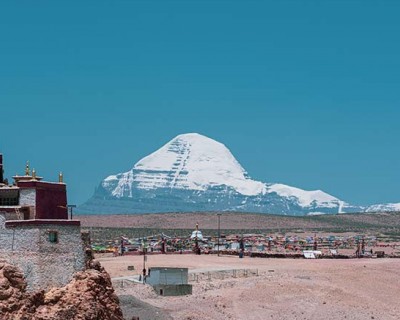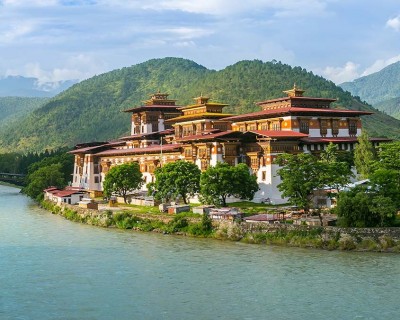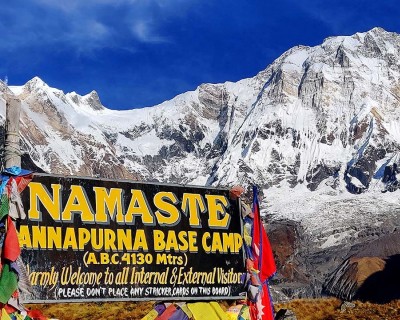Annapurna Circuit Trek Packing List for Spring and Autumn (Peak Seasons)
Spring (March to May) and autumn (September to November) are two of the most popular seasons for high-altitude trekking as well as mountain climbing adventures in Nepal. Both of these seasons have stable climatic conditions, dry trekking trails, cultural ambiance, and, most of all, clear-incredible views of the Himalayan vistas.
Thus, the Annapurna Circuit Trek packing list for these seasons is not that hefty, as you will pretty much deal with mild and comfortable weather conditions. Here are some packing suggestions for the Annapurna Circuit Trek during spring and autumn.
Spring and Autumn Packlist- Annapurna Circuit Trek Packing List
For Head and Body
- Sunbrim/sunblock hat, sports cap
- Beanie, woolen hat, insulated hat
- Neck warmers, cowls, or scarf
- Insulated inner wears
- Light shirt, t-shirt
- Warm thick shirts
- Woolen sweater
- Fleece jacket
- Shell jacket, windproof/waterproof jacket
- Down jacket
- Lightweight gloves
- Woolen gloves, windproof/waterproof gloves
- Cotton pants, hiking shorts
- Waterproof/windproof trousers
- Insulated trousers, woolen trousers
For Feet
- Lightweight moisture-wicking socks
- Woolen socks, insulated socks
- Trekking boots (break-in first)
- Sports or trainer shoes
- Crocks or sandals for teahouses
- Waterproof leg gaiter
- Ankle support
Personal Care/Hygiene
- Toothbrush and toothpaste
- Soap, shampoo, conditioners
- Sunblock cream and body lotion
- Lip protection
- Quick-dry travel towel
- Tissue paper, wet wipes
- Toilet paper
- Hand sanitizer
- Foot powder
- Bug repellent
- Personal medications
- Mirror and nail clipper
- Shaving kit
- Dental floss
- Female hygiene products
Equipment/Gear
- Trekking poles
- Sleeping bag/ sleeping pad
- Deadlamp/ flashlight
- UV protection sunglass
- Camera and binoculars
- Dutctape
- Packing sack
- Trash bag
- Earplug and sleeping mask
- Powerbank
- Pen and journal
- Travel pillow
- Map and compass
- GPS device
- Rain cover
- Card games, board games
- Books and magazines
Annapurna Circuit Trek Packing List for Monsoon and Winter (Off-Seasons)
.jpg)
Doing this exhilarating trekking adventure during the off-seasons, like winter(December to February) and monsoon (June to August), can be a little tricky. To maneuver on the trails with the seasonal challenge and not-so-perfect climatic conditions, you need to be extra prepared with the Annapurna Circuit Trek packing list in these seasons.
Especially for your circuit trekking adventure in the winter season, you will need to carefully consider the colder temperatures of the region and potential snowfall during your exploration.
Your packing list for these off-seasons is pretty much similar to the peak seasons. You can check the same packing list if you are planning your during monsoon. Just make sure to pack some helpful gear to protect you and your luggage from the continuous downpour.
However, if you are doing the trek in winter, you can ditch the light layers as temperatures are chilly, even at lower trekking trails. Here is an ideal Annapurna Circuit Trek packing list that you can use for cross-reference.
Winter Packlist- Annapurna Circuit Trek Packing List
For Head Upper Body
- Sunhat, cap
- Thick woolen hat, insulated beanie
- Mittens, thick gloves
- Light or insulated gloves for lower regions
- Neck gaiter, balaclava, or cowls
- Insulated vest
- Sweater
- Full t-shirt, woolen shirt
- Waterproof/windproof jacket
- Fleece jacket, shell jacket
- Heavy down jacket, light down jacket
- Insulated inner wears
For Lower Body and Feet
- Waterproof/windproof trousers
- Comfortable, warm, and thick cotton pants
- Insulated or woolen trousers
- Thick layer socks, woolen socks
- Insulated socks
- Feet gaiter
- Insulated waterproof trekking boots (break-in first)
- Insulated sport shoes
- Winter crocks
Personal Hygiene/Toiletries
- Toothbrush, toothpaste
- Biodegradable soap
- Shampoo or conditioner
- Quick dry towel
- Tissue paper, toilet paper
- Lip protection, body lotion to protect against cold wind
- Sunscreen cream
- Nail clipper, mirror
- Sanitizer
- Deodorants
- Personal medication
- Water purification solution or tablets
- Female hygiene products
Equipment/Gear
- Backpack
- Trekking Poles
- Ice axe or ice tool (if needed)
- Microspikes or crampons (depending on the snow conditions on the trail)
- Polarized sunglasses or ski goggles
- Sleeping bag (ideal for sub-zero climatic conditions)
- Navigational tools like compass, map, and GPS device
- Camera, binoculars
- Power bank
- Emergency bivvy or space blanket
- Portable heater
- Camera and binoculars
- Book, journal
- Rain/snow cover
- Thermos flask
- Heating pad
What Can You Buy in Kathmandu?
If you don’t want to carry heavy gear and clothes, paying extra for the luggage on your international flight, you also have the option to rent or buy the necessities for the trek in Kathmandu.
This bustling tourist hub of the country has it all, from simple hiking shorts and t-shirts to heavy-down jackets and crampons for mountaineering adventure. If you want to buy them, you can search for authentic shops, taking suggestions from your agency.
In case you don’t want to buy the necessary equipment and clothes for the trip, you can also rent them from the shops. These types of gear-renting shops are available in Thamel and other major tourist areas.
Renting gear and equipment is the most efficient way to do the Himalayan trekking adventures in Nepal. You can easily rent the equipment/gear and trekking clothes from the starting price of US$ 1 to US$ 5 per day.
If you want to buy the necessary clothes and gear, the cost is approximately US$ 10 to US$ 80, from base layers to insulated layers. As for the trekking gear, the general cost margin starts at US$ 10 and ranges up to US$ 300 depending on the nature of the gear and quality/brand value.
Travel Documents for the Annapurna Circuit Trek
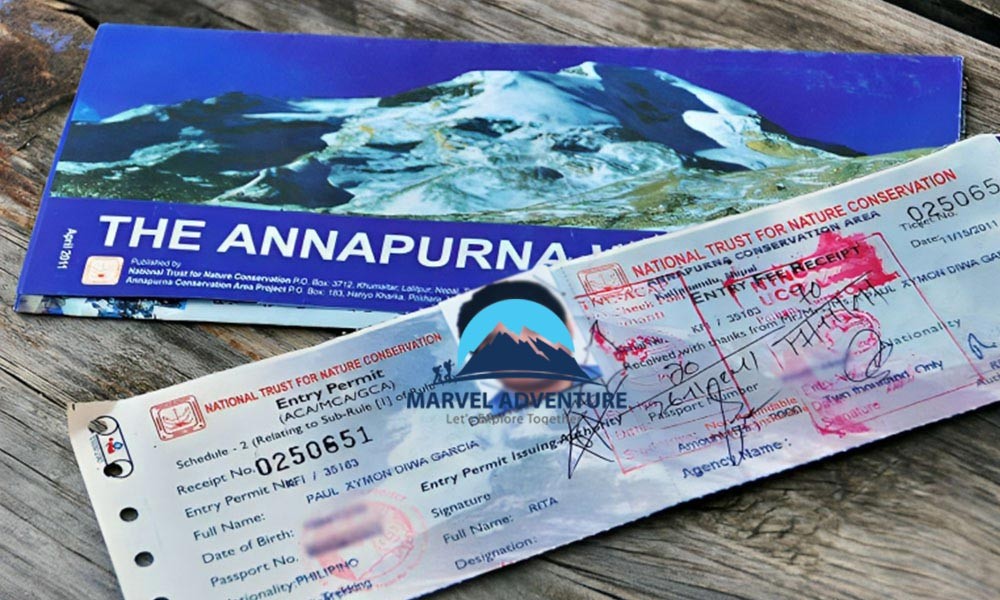
Moving further in the Annapurna Circuit Trek packing list, it is also necessary to understand what kind of documentation and permits you will require for this Himalayan adventure.
Permits
To explore these charming trails of the second mainstream trekking route in Nepal, you will require the following permits.
- Annapurna Conservation Area Project (ACAP) Permit
- Trekker’s Information Management System (TIMS) Card
You will need to get an ACAP Permit as this trekking adventure takes you across the protected areas of the Annapurna region. This permit costs approximately US$ 30 in all of the seasons.
Similarly, the TIMS Card is a helpful card that enhances the security feature of your trek by keeping track of the transit points. You will have to pay about US$ 17 to get this card. Both of these cards can be obtained from the Nepal Tourism Board office in Kathmandu.
The ACAP Permit can also be obtained from the Nepal Tourism Board Center in Pokhara and at the counter of Besisahar.
Documents Required to Get Permits
You will need to present the following documents to get permits for the Annapurna Circuit Trek in Nepal.
- Copy of passport
- Two passport-sized photographs
- Copy of travel insurance (mandatory)
- Start and end date of trek
- Entry and exit point of the trek
- Emergency contact detail in Nepal
- Emergency contact details in the home country
Visa
A Nepali Travel Visa is another crucial travel document that you will need to get for a legal stay in the country. You can get a travel visa in Nepal by filling out an online form 10 to 15 days prior to your arrival or getting it during your arrival at the Tribhuvan International Airport (TIA).
You have three travel visa options for Nepali Travel Visa that you can choose from.
- 15 Days Travel Visa– US$ 30
- 30 Days Travel Visa– US$ 50
- 90 Days Travel Visa– US$ 125
If you are looking for a longer stay in this Himalayan country, then you can extend your visa for a minimum of 15 Days, which will cost approximately US$ 45 (US$ 3 per day). If you want to learn more about the visa process and cost, you can visit the official website of the Nepali Department of Immigration.
Travel Insurance
Travel insurance is another compulsary documentation for high-altitude trekking adventures in Nepal. You will require a copy of your insurance to apply for trekking permits, and without insurance, you won’t be able to trek at all.
You are recommended to get an insurance plan that covers high-altitude sickness, clinical help, and emergency helicopter evacuation. This way, even in any case of mishap, you won’t have to bear all the financial burden by yourself.
The general cost of travel insurance in Nepal is US$ 30 to US$ 50 for the basic level that covers trek upto 6,000 meters. However, the more comprehensive plans that include a wide area of coverage can cost somewhere between US$ 100 to US$ 150.
What About Cash?
There are ATM facilities along the Annapurna circuit trekking route, so you will need to change the amount of cash to local currencies. Even though there are some ATMs in the lower regions, they are not always reliable.
So, it would be wise to carry sufficient cash, converting it to local currency prior to joining the trekking trail. Depending on the nature of your trekking package, the cost of food and accommodation facilities are covered by your package.
You will just have to pay for the personal nature expenses during the trek, like snacks, drinks, laundry, charging, wifi, hot showers, etc. In aggregate, you will spend about US$ 30 toUS$ 50 per day during your trek.
**Note: We also recommend you to buy your favorite snacks and necessary toiletries for the trip in the city areas before the trek. You may not always find the items you are looking for at the teahouses, and they also cost higher relative to the altitude gain**
What is the Best Time to Do This Trek?- Temperature Variations
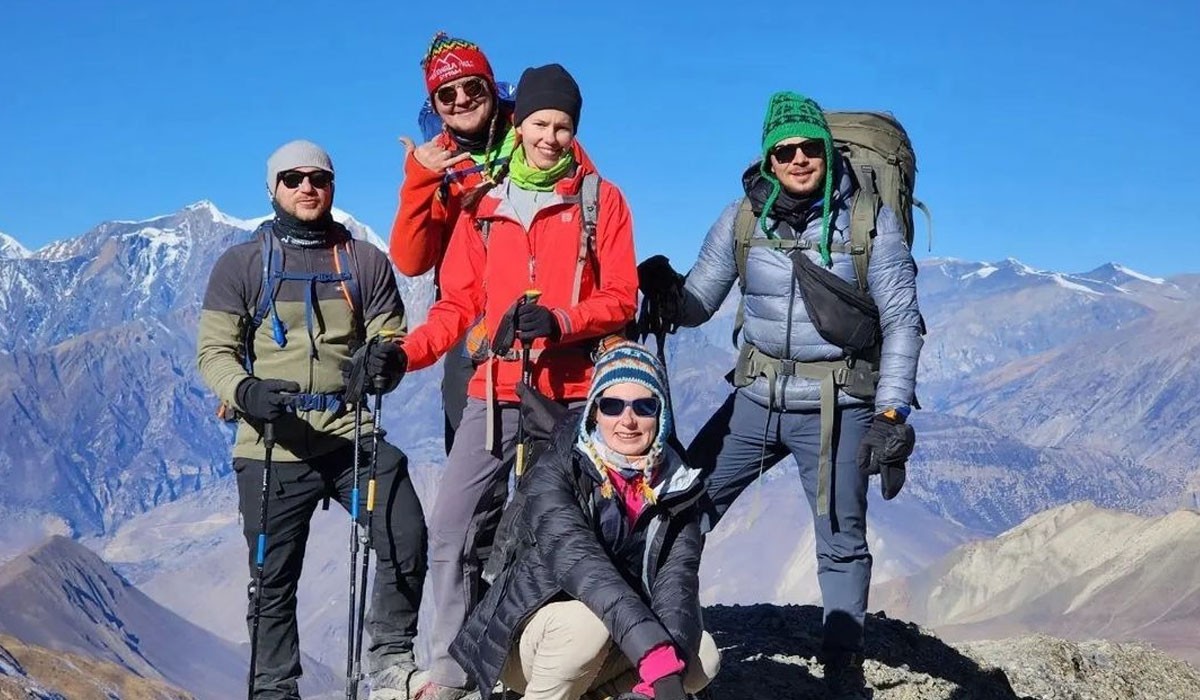
Temperature of Annapurna Region in Peak Seasons
As we discussed, the Annapurna Circuit Trek can be done throughout the year. It depends on you which seasonal prospects you want to experience during your exploration. If talking about comfortable temperatures and stable climatic conditions, spring and autumn take the trophy home.
Both of these peak seasons are known for their suitable climatic conditions for high-altitude trekking in Nepal. Besides that, spring adds natural allurements and exciting wilderness exploration prospects to your adventure.
Autumn, on the other hand, has the clearest visibility, dry trekking trails, and unique landscapes of the fall season. The cultural experience is also extensive during this season, which is dubbed as the number one season for trek and mountain expeditions in Nepal.
The temperature of the spring season averages around 8°C to 25°C during the month of March. It gradually starts to increase from 11°C to 31°C during April and averages around 12°C to 31°C during May.
As for the autumn season, the temperature in its initial month, September, is around 19°C to 31°C. The following month, October, reaches the optimum temperature for outdoor trekking, 12°C to 27°C and the temperature in November drops to 10°C to 25°C.
Temperature of Annapurna Region in Off-Seasons
If you are wondering about the temperatures on the trekking trail during the off-season, like winter and monsoon, the temperature of the Annapurna region in the winter averages around 5°C to 24°C.
But this is just a general temperature estimation of the lower trekking region and the Annapurna region in overall. The temperatures are usually in minus degrees as the alpine altitudes, and you will have to deal with freezing climatic conditions during your trek in this season.
The monsoon season is also the summer season in Nepal, so when it's not raining, you can expect spikes in the temperatures. The temperature of the region generally averages around 16°C, the lowest to the highest, 32°C.
Some Helpful Tips for Annapurna Circuit Trek Packing List
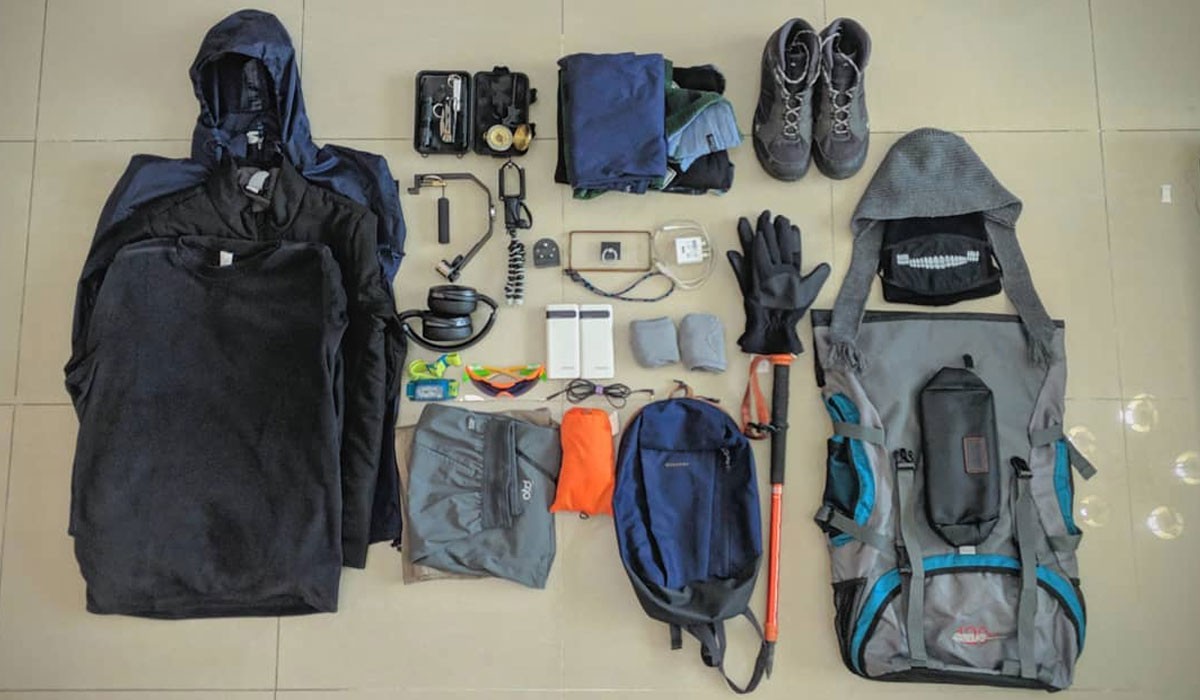
Adhere to the Layering System
If you follow a proper layering system, you will be able to adapt to different climatic conditions during your Annapurna Circuit Trek in Nepal. The most general dressing layers for the high-altitude trek in the country are moisture-wicking base layers, insulated-warm mid-layers, and waterproof/windproof outer layers to adapt to different climatic conditions.
Pack Efficiently- Use a Packing List
For the most efficient packing without going overboard, you can create a packing list. Then, determine the priority of the item, creating different sections and sub-sections. This way, you will not miss out on the most crucial component and properly optimize your luggage without over-packing.
The minimum luggage limit for a porter in Nepal is about 15 kg, and one porter is assigned for two trekkers. If you go overboard with packing, you will have to either carry the exceeding luggage by yourself or hire another porter for extra cost.
Be Careful While Buying Trekker Gear in Kathmandu
Although buying or renting trekking gear at Kathmandu (especially in Thamel) is one of the most efficient ways to do this trek, you need to be careful while making your purchase. The quality of products differs depending on the marketplace you are exploring. Most products in the mid-level marketplace are knock-offs and are not that durable.
If you purchase knock-offs just because they are cheaper, then you may have to deal with defective products during your trek. They are known for not being able to stand up the harsh weather conditions at the higher altitudes. So, make sure that you have an excellent gear that works for you.
Prepare for Different Climatic Conditions
During this exciting Himalayan exploration, you will traverse through different climatic zones. Your trekking route will take you across the sub-tropical regions to alpine altitudes, so you need to be prepared for every kind of climatic condition.
Even if you are following a proper layering system, you need to pack clothes with the right thickness for a comfortable experience at every altitude. It is generally warmer at the lower altitudes; however, at the alpine altitudes, the temperatures are usually in minus degrees.
Check Your Equipment
Packing the right gears efficiently isn’t just enough when it comes to long-duration high-altitude adventures. You also need to make sure that all your gear is working properly and comfortably. If your trek is short and at a lower elevation, a defect gear might not be that much of a problem.
However, when doing long-duration adventures like Annapurna Circuit Trek, if you fail to detect the faulty gear, you will have to deal with it for a long period, which also certainly impacts the experience. So, when doing this exhilarating exploration, make sure that all your gear is functional and comfortable for an unforgettable journey.
You may also like:
Final Say
It is essential to stay prepared for every kind of circumstance for your trekking adventure rather than having regrets later. These recommendations include some of the basic gear, layers, and hygiene products that you will require for the Annapurna Circuit Trek.
You can also optimize the pack for other items that you might feel necessary. To create the most efficient packing list, you can do thorough research on the areas you will trek to during your exploration. Also, taking notes on insider tips from experienced trekkers will certainly be helpful.
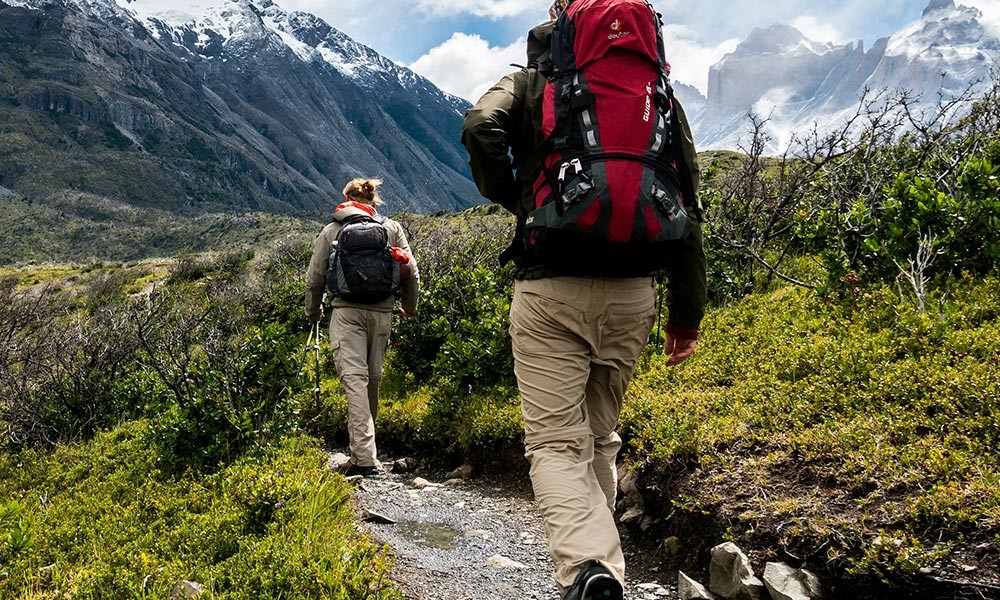


.jpg)



